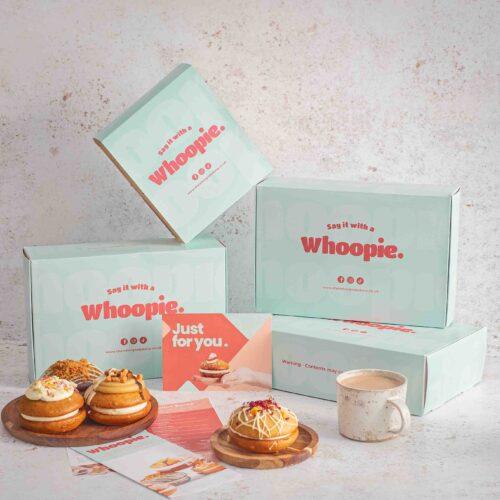We get it. We hear you. We know we’re asking a lot. And we think you deserve an explanation.
Firstly, please know that we’re not the only ones charging this much. We did our market research before we launched, and believe it or not, we are competitively priced compared with those like us and those we aspire to compete with.
We all know that bricks and mortar shops come with unbelievable overheads these days – many shop-based businesses that are just about surviving are struggling to meet rising rents, energy, and staffing costs, not to mention the rising costs of every aspect of the supply chain. In the current climate, e-commerce seems like the most sensible business model.
But, we are a start-up entering a saturated market with an unknown product that no one was Googling until we turned up. We didn’t start with huge investment. We work around the clock and we don’t yet earn a living from the business – we are paying for everything out of our own pockets. Every discount, every refund, every courier eff-up, comes directly out of our personal pockets.
We don’t mean to sound like martyrs and we know for certain that we’re not the only ones…!! This is how it goes for almost every small start-up that doesn’t have big investment. We all have to work hard to grow organically.
E-Commerce Has its Own Overheads
It’s tough for little businesses like us hoping to break through in e-commerce. The costs are high, the customer expectations have been set by the big boys (Amazon, Tesco…), and the access to customers is extremely expensive (Google, Facebook, email marketing…). Little businesses are paying for every single flash you see of their products that are not on their own feeds. Every email they send, every Google Shopping Ad clicked, every Facebook ad.
They’re all fighting for your attention, your clicks, your custom, your CONVERSION. Getting paid isn’t the first priority. Just breaking even is. Paying staff, paying suppliers, getting the brand name known, designing and maintaining their website, constant photography…
And then there’s packaging. Ahhhh, packaging. You’d think couriers would be the biggest headache. Not so. We have a unique product so we had to have bespoke packaging designed, and it is an absolute minefield. We had no idea how hard, how time-consuming and how expensive it would be when we started our business. We’ve learnt a lot!!
Fortunately, a year in, we think we’ve finally cracked it with beautiful packaging that it is at once robust, efficient, sustainable, and scalable, but it’s taken a LOT of money and effort to get there.
But, none of this is really your concern
For any business to survive, and to be viable, it has to be able to compete. That’s just the way it goes. No point complaining about it. What matters to you as a customer is the value you get for your money. So, let’s come back to the original question, when you can buy a donut at Lidl for 35p, how can any business get away with charging £3-4 or more for a cake the same size?
Well, let’s think about that value for a moment. To get that donut from Lidl, you had to get out of your PJs (if indeed you wear any), leave your house, get yourself to the supermarket one way or another.
You had to pick the donut up and get to the till, most likely with a trolley-load full of shopping (because why would you go through all that hassle just for a 35p donut?!), queue, pay for your plastic bags or bag for life, bag up your own shopping, converse with the checkout person, and then get yourself home, get back into your PJs so that you could enjoy your donut on your sofa, uninterrupted, with your cup of tea and your cat (or dog, or ferret, whatever does it for you).
Phew. That was a lot of effort. We hope you reeeeeeally enjoy that donut. Don’t get us wrong, they are delicious! We love them. But, you really earned it.
Convenience and Quality
Now compare that to the handmade, artisan Whoopie which may have cost around £3.50-£4.50 depending on whether you got a discount and which platform you bought it on. The purchase was made online, from your sofa, right there in your PJs. An actual real-life expert Baker carefully handmade and hand-decorated your Whoopie.
Then someone else got up and went to work manually processing your order, paying the courier on your behalf, making all the courier arrangements, carefully wrapping and protecting each individual Whoopie, picking and packing your order so that you didn’t have to leave your house.
A couple of days later it was delivered to your door via 24-hour courier service (assuming the courier didn’t breakdown or get stuck in a motorway queue or flooding – it is the real world, after all), in beautiful packaging that kept it safe during transit. When it reached you, it still looked perfect and tasted delicious, for enjoyment on your sofa, without you having to lift a finger. Surely that’s value for money?
£3.50 for a Cup of Coffee? Sounds fair, if you think about…
We all know that cost isn’t just about the actual pricing of the individual product, and value isn’t just about the size. Consider how much money millions of people pay every day for a cup of coffee at high street coffee chains. Why do we do it, when most of us have coffee at home? Because they’re there – where we are – when we want it – making fresh coffee on our behalf and offering it up to us right there, usually with a smile, in the middle of the central business district of a busy town or city, where rents are high and competition is great. Consider the millions of dollars spent on marketing that led to that one decision in that moment that theirs would be the specific chain you’d choose for that single cup of coffee. And the discounts and offers that keep you going back.
Obviously, there are major differences in the costs between mass-produced products retailing in supermarkets and handmade products that artisan producers can preach about, but let’s be honest, in a cost-of-living crisis there is certainly a place for low-cost food, whatever your budget. We buy Lidl donuts when we happen to be there shopping anyway. They’re tasty, convenient, and excellent value. But we also know we’re getting huge added value when we choose to spend our money on any small e-commerce food business’ products online, even if, on the face of it, the products appear to cost more.
And if we consider that our key target-market is the gift market, well, a paper bag of six supermarket-bought donuts (that you had to go and get and then deliver yourself) v a box of six artisanal cakes packaged with attention to detail and delivered to your loved-one’s door with a hand-written, personalised message…well, you can be the judge.







